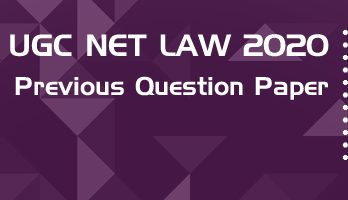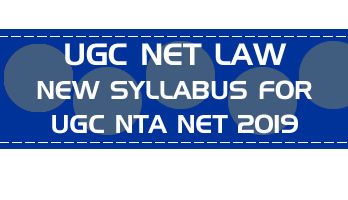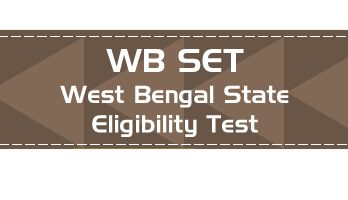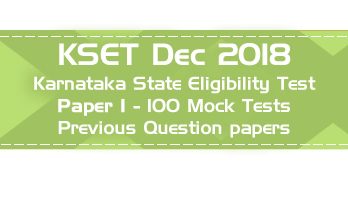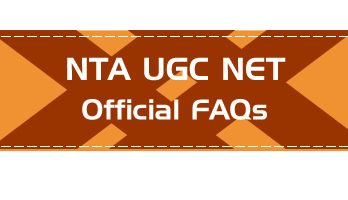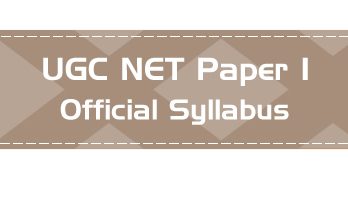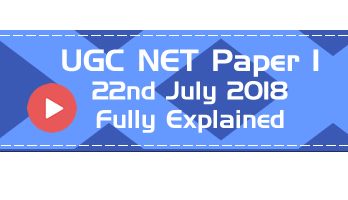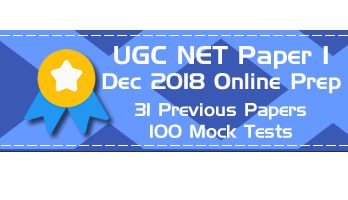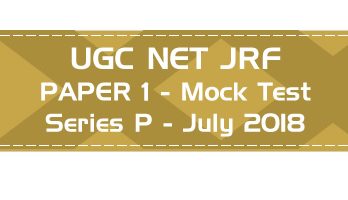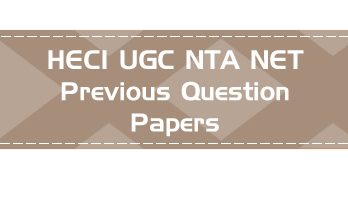- Latest Pattern Mock Tests including comprehension based questions
- Previous Question Papers with Answer Keys - From 2004 till the most recent exam
- 75 Full Length Mock Tests - New Pattern Paper II, with 100 questions each
- 50 Mini Practice Mock tests - with 25 questions each
- Unlimited Practice - New Questions in every attempt of all mocks
- Questions & Answer Choices randomly shuffled in every attempt for better practice
- Database of over 11000+ MCQs covering the entire syllabus
- Unlimited access and practice for one year from the date of purchase
- Accessible 24 x 7 via Smart-Phone browsers and Desktops
Authentic Feedback from previous LawMint users :
I got AIR 21 in CLAT PG. Thank you so much. Your mocks helped me a lot in my preparation 🙂 - Ayushi Jain
I have subscribed to your CLAT PG program and got AIR 36 in this year CLAT PG. I have also secured AIR 54 in AILET PG exam. I would like to thank you. Your mock paper really helps a lot - Shrashank Tripathi
I would like to thank you for the CLAT PG LLM COURSE. Practising mock tests there helped me in getting confidence and hence I was able to get AIR 45 in CLAT PG LLM - Akshay Awasthi
A year back, I relied on the IIT Kharagpur RGSOIPL mock test series by LawMint to prepare for my RGSOIPL entrance test. Few months back, I relied on your UGC NET Law series to prepare for UGC NET. I was the topper of the RGSOIPL entrance, and have cracked JRF in UGC NET. All thanks to LawMint - Anshuman Sahoo
"I got AIR 18 in CLAT PG and General Category rank 28 in AILET PG. I want to thank you for helping me practice well in controlled conditions from any place. It gave me a lot of confidence and I took the tests while travelling too. I also made it to IIT Kharagpur." - Vinodharani
"Lawmint has been of great help to me in securing AIR 25 in AILET PG and AIR 29 in CLAT PG examinations. The subjective and objective approach of the test series kept me up to date with the latest exam pattern." - Bhawna Nanda
"I, Nimmy Saira Zachariah joined you clat test series. I cleared AILET PG with 30th rank. Your test series were of immense help as it gave me clear idea of where my preparations stand thank you once again law mint." - Nimmy S Z
"Hey guys. Where do I start? If I thought that getting AIR 59 in Clat PG was it, then how wrong I was. With Lawmint now I have cracked UGC NET as well." - Joyanta Chakraborty
Note : Answer Keys to all Previous Question Papers published on LawMint are available to registered users of LawMint.com’s Online Practice Packs.
Check out all the HECI NTA NET or UGC CBSE NET Paper 1 previous question papers here : Previous Papers & Mock Tests
Note : UGC has rolled out a revised syllabus for both Papers 1 & 2 from Jan 2019 onward.
From the following list of statements, select those which indicate the characteristics and basic requirements of teaching.
(i) Teaching implies communication.
(ii) Teaching is like selling goods.
(iii) Teaching means managing and monitoring.
(iv) Teaching implies influencing others.
(v) Teaching requires convincing others.
(vi) There can be no teaching without infrastructural support.
– (i), (iii) and (iv)
– (i), (ii) and (iii)
– (iv), (v) and (vi)
– (ii), (v) and (vi)
What is the purpose underlying the use of teaching aids ?
– To make the lessons interesting
– To capture the students’ attention
– To enhance access to technological resources
– To optimise learning outcomes
In the two lists given below, List I provides the list of teaching methods, while List II indicates the factors helpful in rendering them effective. Match the two lists and choose the correct answer from the code given below.
List I (Teaching methods)
(a) Expository method
(b) Investigative method
(c) Discussion method
(d) Personalised method
List II (Factors helpful in making them effective)
(i) Trust and openness in relationship
(ii) Freedom to choose a theme and scope for frank exchange of ideas
(iii) Creating a challenge to address the problems
(iv) Systematic, step-by-step presentation
(v) Maximising infrastructural support
Choose the answer corresponding to the order (a) (b) (c) (d)
– (iv) (iii) (ii) (i)
– (i) (ii) (iii) (iv)
– (ii) (iii) (iv) (v)
– (iii) (i) (ii) (iv)
Below are given statements pertaining to evaluation systems. Identify those which correctly explain them.
(i) Criterion-Referenced Testing (CRT) focuses on a delimited domain of learning tasks.
(ii) Norm-Referenced Testing (NRT) requires a clearly defined group.
(iii) Formative tests are given at the end of a course.
(iv) Both Norm-Referenced Testing (NRT) and Criterion-Referenced Testing (CRT) use the same type of test items.
(v) Summative tests are used regularly during teaching transactions.
(vi) Mastery tests are examples of Norm-Referenced Testing.
– (i), (ii) and (iii)
– (i), (ii) and (iv)
– (iv), (v) and (vi)
– (ii), (v) and (vi)
In the list given below, identify those key teaching behaviours which have been observed to be contributive to effectiveness.
(i) Lesson clarity
(ii) Probing
(iii) Teacher-task orientation
(iv) Student success rate
(v) Instructional variety
(vi) Using student ideas
– (i), (ii), (iii) and (iv)
– (iii), (iv), (v) and (vi)
– (i), (iii), (iv) and (v)
– (ii), (iii), (v) and (vi)
Identify the correct order of the following components which are interrelated in research.
(i) Observation
(ii) Hypothesis making
(iii) Developing concepts
(iv) Deducing the consequences of theories
(v) Methods employed to obtain them
– (v), (iv), (iii), (ii) and (i)
– (i), (iii), (ii), (iv) and (v)
– (ii), (iii), (i), (iv) and (v)
– (iv), (v), (iii), (ii) and (i)
In the list given below, identify those statements which correctly describe the meaning and characteristics of research.
(i) Research is a method of improving our common sense.
(ii) Deductive and inductive methods get integrated in a research process.
(iii) Research is creativity and charisma.
(iv) Research is the use of scientific method to provide answers to meaningful questions.
(v) Method of consulting and using experience is called research.
(vi) The answers provided by research can be empirically verified.
– (ii), (iv) and (vi)
– (i), (ii) and (iii)
– (iv), (v) and (vi)
– (i), (iii) and (v)
In the two lists given below, List I provides the types of research methods, while List II indicates the critical features associated with them. Match the two lists and choose the correct answer from the code given below.
List I (Research methods)
(a) Ex-post facto method
(b) Case study method
(c) Philosophical method
(d) Descriptive survey method
List II (Critical features)
(i) Finding out the status based on a study of a large sample
(ii) Interpretation of thoughts of a great thinker
(iii) Intervention based ameliorative approach
(iv) Causal comparison and correlational studies
(v) In-depth study of a unit specified for the purpose
Choose the answer corresponding to the order (a) (b) (c) (d)
– (i) (ii) (iii) (iv)
– (ii) (iii) (iv) (v)
– (i) (iii) (ii) (v)
– (iv) (v) (ii) (i)
A researcher uses parametric test in lieu of non-parametric test for analysis and interpretation of results. This may be described as a case of
– Unethical research practice
– Malpractice in reporting of results
– Technical lapse in handling data
– Manipulation of research results
Which of the following provides more latitude to the researcher for creative expression ?
– Thesis writing
– Writing of a research article
– Presentation of a conference paper
– Preparing a research synopsis
Read the following passage carefully and answer the question.
Some 2000 km down south of the Amazon, and about the same time when the tidal waves were at their highest as a consequence of the big clash of sea and fresh water at the Amazon delta most vigorously in March and April (2018), more than 40,000 people were talking about the power of water. Brasilia hosted the eighth edition of the World Water Forum (WWF – 8), where heads of states, civil societies and private sector gathered to discuss the present and future of mankind’s most valuable resource. This year’s theme was ‘Sharing Water’, and the government authorities expectedly put forth a political declaration, aimed at raising awareness about threats and opportunities associated with water resources. Deliberations here would play a decisive role in the periodic assessment of the sustainable development goals of Agenda 2030.
Brazil has established a solid institutional and legal framework for water management, based on the principle of multi-stakeholder participation. Brazil has also been conducting one of the boldest river inter-linking projects in which 500 km of canals will transfer abundant waters from the Sao Francisco basin to small rivers and weirs in one of Brazil’s most arid areas, benefitting more than 12 million people in almost 400 municipalities.
India, too, has a large variety of water resources. An institutional framework consisting of regional river boards and river cleansing missions has been set up, while successive Central Governments have made efforts to address the dire needs of irrigation and mitigation of ground water depletion. As in the case of Brazil, a lot remains to be done in India. Adequate treatment of industrial waste-water, the fight against contamination of riverbeds and assistance to drought affected areas are high priority topics for both New Delhi and Brasilia. Due to these commonalities, there is ample room for bilateral co-operation. Water is a local, regional and global common and as such, collaboration is key to address most of its associated threats.
Today, mankind is faced with two facts : water is too powerful a force to be fought over, and too valuable a resource to be lost. To harmonise these two conflicting aspects, sharing water is perhaps the only meaningful motto for the ages to come.
As per the text of the passage, the eighth edition of the World Water Forum was concerned with
– Present and future of mankind
– The issue of high tidal waves
– The power of water
– The role of civil society in solving water-related problems
Read the following passage carefully and answer the question.
Some 2000 km down south of the Amazon, and about the same time when the tidal waves were at their highest as a consequence of the big clash of sea and fresh water at the Amazon delta most vigorously in March and April (2018), more than 40,000 people were talking about the power of water. Brasilia hosted the eighth edition of the World Water Forum (WWF – 8), where heads of states, civil societies and private sector gathered to discuss the present and future of mankind’s most valuable resource. This year’s theme was ‘Sharing Water’, and the government authorities expectedly put forth a political declaration, aimed at raising awareness about threats and opportunities associated with water resources. Deliberations here would play a decisive role in the periodic assessment of the sustainable development goals of Agenda 2030.
Brazil has established a solid institutional and legal framework for water management, based on the principle of multi-stakeholder participation. Brazil has also been conducting one of the boldest river inter-linking projects in which 500 km of canals will transfer abundant waters from the Sao Francisco basin to small rivers and weirs in one of Brazil’s most arid areas, benefitting more than 12 million people in almost 400 municipalities.
India, too, has a large variety of water resources. An institutional framework consisting of regional river boards and river cleansing missions has been set up, while successive Central Governments have made efforts to address the dire needs of irrigation and mitigation of ground water depletion. As in the case of Brazil, a lot remains to be done in India. Adequate treatment of industrial waste-water, the fight against contamination of riverbeds and assistance to drought affected areas are high priority topics for both New Delhi and Brasilia. Due to these commonalities, there is ample room for bilateral co-operation. Water is a local, regional and global common and as such, collaboration is key to address most of its associated threats.
Today, mankind is faced with two facts : water is too powerful a force to be fought over, and too valuable a resource to be lost. To harmonise these two conflicting aspects, sharing water is perhaps the only meaningful motto for the ages to come.
Deliberations on the theme ‘Sharing Water’ should facilitate
– Regular evaluation of sustainable development goals
– The role of private sector in preserving water resources
– The establishment of institutional framework
– Sensitisation of government authorities
Read the following passage carefully and answer the question.
Some 2000 km down south of the Amazon, and about the same time when the tidal waves were at their highest as a consequence of the big clash of sea and fresh water at the Amazon delta most vigorously in March and April (2018), more than 40,000 people were talking about the power of water. Brasilia hosted the eighth edition of the World Water Forum (WWF – 8), where heads of states, civil societies and private sector gathered to discuss the present and future of mankind’s most valuable resource. This year’s theme was ‘Sharing Water’, and the government authorities expectedly put forth a political declaration, aimed at raising awareness about threats and opportunities associated with water resources. Deliberations here would play a decisive role in the periodic assessment of the sustainable development goals of Agenda 2030.
Brazil has established a solid institutional and legal framework for water management, based on the principle of multi-stakeholder participation. Brazil has also been conducting one of the boldest river inter-linking projects in which 500 km of canals will transfer abundant waters from the Sao Francisco basin to small rivers and weirs in one of Brazil’s most arid areas, benefitting more than 12 million people in almost 400 municipalities.
India, too, has a large variety of water resources. An institutional framework consisting of regional river boards and river cleansing missions has been set up, while successive Central Governments have made efforts to address the dire needs of irrigation and mitigation of ground water depletion. As in the case of Brazil, a lot remains to be done in India. Adequate treatment of industrial waste-water, the fight against contamination of riverbeds and assistance to drought affected areas are high priority topics for both New Delhi and Brasilia. Due to these commonalities, there is ample room for bilateral co-operation. Water is a local, regional and global common and as such, collaboration is key to address most of its associated threats.
Today, mankind is faced with two facts : water is too powerful a force to be fought over, and too valuable a resource to be lost. To harmonise these two conflicting aspects, sharing water is perhaps the only meaningful motto for the ages to come.
The institutional framework of Brazil for water management
– Promotes bilateral collaboration
– Provides for multi-stakeholder participation
– Consists of regional river boards
– Addresses legal dimensions of water sharing
Read the following passage carefully and answer the question.
Some 2000 km down south of the Amazon, and about the same time when the tidal waves were at their highest as a consequence of the big clash of sea and fresh water at the Amazon delta most vigorously in March and April (2018), more than 40,000 people were talking about the power of water. Brasilia hosted the eighth edition of the World Water Forum (WWF – 8), where heads of states, civil societies and private sector gathered to discuss the present and future of mankind’s most valuable resource. This year’s theme was ‘Sharing Water’, and the government authorities expectedly put forth a political declaration, aimed at raising awareness about threats and opportunities associated with water resources. Deliberations here would play a decisive role in the periodic assessment of the sustainable development goals of Agenda 2030.
Brazil has established a solid institutional and legal framework for water management, based on the principle of multi-stakeholder participation. Brazil has also been conducting one of the boldest river inter-linking projects in which 500 km of canals will transfer abundant waters from the Sao Francisco basin to small rivers and weirs in one of Brazil’s most arid areas, benefitting more than 12 million people in almost 400 municipalities.
India, too, has a large variety of water resources. An institutional framework consisting of regional river boards and river cleansing missions has been set up, while successive Central Governments have made efforts to address the dire needs of irrigation and mitigation of ground water depletion. As in the case of Brazil, a lot remains to be done in India. Adequate treatment of industrial waste-water, the fight against contamination of riverbeds and assistance to drought affected areas are high priority topics for both New Delhi and Brasilia. Due to these commonalities, there is ample room for bilateral co-operation. Water is a local, regional and global common and as such, collaboration is key to address most of its associated threats.
Today, mankind is faced with two facts : water is too powerful a force to be fought over, and too valuable a resource to be lost. To harmonise these two conflicting aspects, sharing water is perhaps the only meaningful motto for the ages to come.
What would be of high priority to both New Delhi and Brasilia as regards river water ?
– Proposing water as a global common
– Sharing water
– Development of large water resources
– Fight against contamination of riverbeds
Read the following passage carefully and answer the question.
Some 2000 km down south of the Amazon, and about the same time when the tidal waves were at their highest as a consequence of the big clash of sea and fresh water at the Amazon delta most vigorously in March and April (2018), more than 40,000 people were talking about the power of water. Brasilia hosted the eighth edition of the World Water Forum (WWF – 8), where heads of states, civil societies and private sector gathered to discuss the present and future of mankind’s most valuable resource. This year’s theme was ‘Sharing Water’, and the government authorities expectedly put forth a political declaration, aimed at raising awareness about threats and opportunities associated with water resources. Deliberations here would play a decisive role in the periodic assessment of the sustainable development goals of Agenda 2030.
Brazil has established a solid institutional and legal framework for water management, based on the principle of multi-stakeholder participation. Brazil has also been conducting one of the boldest river inter-linking projects in which 500 km of canals will transfer abundant waters from the Sao Francisco basin to small rivers and weirs in one of Brazil’s most arid areas, benefitting more than 12 million people in almost 400 municipalities.
India, too, has a large variety of water resources. An institutional framework consisting of regional river boards and river cleansing missions has been set up, while successive Central Governments have made efforts to address the dire needs of irrigation and mitigation of ground water depletion. As in the case of Brazil, a lot remains to be done in India. Adequate treatment of industrial waste-water, the fight against contamination of riverbeds and assistance to drought affected areas are high priority topics for both New Delhi and Brasilia. Due to these commonalities, there is ample room for bilateral co-operation. Water is a local, regional and global common and as such, collaboration is key to address most of its associated threats.
Today, mankind is faced with two facts : water is too powerful a force to be fought over, and too valuable a resource to be lost. To harmonise these two conflicting aspects, sharing water is perhaps the only meaningful motto for the ages to come.
The main focus of the passage is on
– Resolution of water conflicts
– Encouraging bilateral co-operation
– Management of water as a valuable resource
– River inter-linking
Given below are two statements, one labelled as Assertion (A) and the other labelled as Reason (R). Read the statements and choose the correct answer using the code given below.
Assertion (A) : Meanings of messages used in the classroom are arbitrary in nature.
Reason (R) : Meanings are learnt as a result of one’s prior experiences.
– Both (A) and (R) are true and (R) is the correct explanation of (A).
– Both (A) and (R) are true, but (R) is not the correct explanation of (A).
– (A) is true, but (R) is false.
– (A) is false, but (R) is true.
Given below are two statements, one labelled as Assertion (A) and the other labelled as Reason (R). Read the statements and choose the correct answer using the code given below.
Assertion (A) : Classroom communication has a cultural dimension.
Reason (R) : Beliefs, habits, customs and languages are the cultural characteristics of communication.
– Both (A) and (R) are true and (R) is the correct explanation of (A).
– Both (A) and (R) are true, but (R) is not the correct explanation of (A).
– (A) is true, but (R) is false.
– (A) is false, but (R) is true.
In a classroom, teachers and students use self-interest issues to judge
– Their acceptability
– Uncritical dispositions
– Negative re-inforcement of ideas
– External non-verbal cues
Variables that affect the information processing in a classroom are
(i) Perception levels
(ii) Learned habits
(iii) Attitudes, beliefs and values
(iv) Selectivity factor
(v) Market expectation
(vi) Institutional intervention
– (i), (ii), (v) and (vi)
– (ii), (iii), (iv) and (v)
– (iii), (iv), (v) and (vi)
– (i), (ii), (iii) and (iv)
Given below are two statements, one labelled as Assertion (A) and the other labelled as Reason (R). Read the statements and choose the correct answer using the code given below.
Assertion (A) : Selective exposure in the classroom is dependent upon students’ perceptions and knowledge about the source of information.
Reason (R) : The effectiveness of the communication source determines the selective exposure of students to information.
– Both (A) and (R) are true and (R) is the correct explanation of (A).
– Both (A) and (R) are true, but (R) is not the correct explanation of (A).
– (A) is true, but (R) is false.
– (A) is false, but (R) is true.
The next term in the series : 5, 11, 21, 35, 53, ?, … is
– 75
– 90
– 115
– 125
The next term in the series : XY, ABC, FGHI, ? , … is
– MNPQO
– MNOPQ
– PQOMN
– NMPOQ
If the code of ALLAHABAD is DPQGOIKKO, then the code of BENGULURU will be
– ESBTBDIMF
– MBDBFEIST
– EISMBTDBF
– ESBDFBTMI
A man paid < 160 while travelling 10 km in a taxi which has some initial fixed charges. Another man paid < 276 for travelling 16 km and the taxi driver charged double of the initial fixed charges from him. The charges of the taxi per km is
– < 10
– < 13
– < 11
– < 17
Gopal walks 20 m North. Then he turns right and walks 30 m. Then he turns right and walks 35 m. Again he turns left and walks 15 m. Then he again turns left and walks 15 m. The shortest distance between his original position and final one is
– 65 m
– 55 m
– 40 m
– 45 m
Choose the proper alternative given in the code to replace the question mark.
Cow – Milk
Bee – Honey
Teacher – ?
– Marks
– Discipline
– Wisdom
– Lesson
Among the following, two statements are related in such a way that if one becomes undetermined, the other will also be undetermined. Select the code that refers to these two statements.
(i) Every fruit is nutritious.
(ii) Fruits are hardly nutritious.
(iii) Fruits are mostly nutritious.
(iv) Some food items are nutritious.
– (i) and (ii)
– (ii) and (iii)
– (iii) and (iv)
– (i) and (iv)
Given below are two premises (a) and (b). Four conclusions are drawn from them. Select the code that embodies validly drawn conclusion(s) (taking the premises individually or jointly).
(a) All saints are noble.
(b) Some religious men are saints.
Conclusions :
(i) Some religious men are noble.
(ii) All religious men are noble.
(iii) Some saints are religious men.
(iv) All noble persons are saints.
– (i) and (ii)
– (ii) and (iii)
– (i) and (iii)
– (i) and (iv)
Which one is not correct in the context of deductive and inductive reasoning ?
– A deductive argument makes the claim that its conclusion is supported by its premises conclusively.
– A valid deductive argument may have all false premises and true conclusion.
– An inductive argument claims the probability of its conclusion.
– An inductive argument cannot provide us any new information about matters of fact.
When the purpose of the definition is to explain some established use of a term, the definition is called
– Stipulative
– Lexical
– Persuasive
– Theoretical
Consider the following table that indicates the percentage of employees working in various departments of an organization along with the ratio of men to women in the same departments. The total number of employees in the organization is 4600. Based on the table, answer the question below.
Name of the Department | Percentage of Employees (%) | Gender Ratioof Employees | |
Men | Women | ||
IT | 26 | 1 | 3 |
Marketing | 22 | 1 | 1 |
Purchase | 18 | 5 | 1 |
HR | 11 | 1 | 1 |
Accounts | 8 | 3 | 1 |
Production | 15 | 3 | 2 |
What is the total number of women in the Accounts department ?
– 86
– 102
– 80
– 92
Consider the following table that indicates the percentage of employees working in various departments of an organization along with the ratio of men to women in the same departments. The total number of employees in the organization is 4600. Based on the table, answer the question below.
Name of the Department | Percentage of Employees (%) | Gender Ratioof Employees | |
Men | Women | ||
IT | 26 | 1 | 3 |
Marketing | 22 | 1 | 1 |
Purchase | 18 | 5 | 1 |
HR | 11 | 1 | 1 |
Accounts | 8 | 3 | 1 |
Production | 15 | 3 | 2 |
What is the total number of employees working in the IT and HR departments together ?
– 1628
– 1646
– 1766
– 1702
Consider the following table that indicates the percentage of employees working in various departments of an organization along with the ratio of men to women in the same departments. The total number of employees in the organization is 4600. Based on the table, answer the question below.
Name of the Department | Percentage of Employees (%) | Gender Ratioof Employees | |
Men | Women | ||
IT | 26 | 1 | 3 |
Marketing | 22 | 1 | 1 |
Purchase | 18 | 5 | 1 |
HR | 11 | 1 | 1 |
Accounts | 8 | 3 | 1 |
Production | 15 | 3 | 2 |
What is the ratio of the total number of men to total number of women working in all the departments put together ?
– 2.65347222222222
– 1.72708333333333
– 2.24097222222222
– 1.13819444444444
Consider the following table that indicates the percentage of employees working in various departments of an organization along with the ratio of men to women in the same departments. The total number of employees in the organization is 4600. Based on the table, answer the question below.
Name of the Department | Percentage of Employees (%) | Gender Ratioof Employees | |
Men | Women | ||
IT | 26 | 1 | 3 |
Marketing | 22 | 1 | 1 |
Purchase | 18 | 5 | 1 |
HR | 11 | 1 | 1 |
Accounts | 8 | 3 | 1 |
Production | 15 | 3 | 2 |
The number of women in the Purchase department forms what percentage of the total number of employees in the organization ?
– 0.03
– 0.06
– 0.01
– 0.12
Consider the following table that indicates the percentage of employees working in various departments of an organization along with the ratio of men to women in the same departments. The total number of employees in the organization is 4600. Based on the table, answer the question below.
Name of the Department | Percentage of Employees (%) | Gender Ratioof Employees | |
Men | Women | ||
IT | 26 | 1 | 3 |
Marketing | 22 | 1 | 1 |
Purchase | 18 | 5 | 1 |
HR | 11 | 1 | 1 |
Accounts | 8 | 3 | 1 |
Production | 15 | 3 | 2 |
What is the ratio of the number of men in the Production department to the number of men in the Marketing department ?
– 0.29375
– 0.382638888888889
– 0.546527777777778
– 0.464583333333333
Which of the following statement(s) regarding the term ICT is/are true ?
P : A digital divide is an economic and social equality with regard to access to, use of, or impact of ICT.
Q : ICT helps in international development by bridging the digital divide and providing equitable access to technologies.
– P only
– Q only
– P and Q
– Neither P nor Q
A confidential file needs to be deleted from a workstation. Which is the most effective way to ensure this ?
– Rename the file
– Compress the file and back-up to tape
– Copy and paste the file into the recycle bin and empty the recycle bin
– Drag the file into the recycle bin and empty the recycle bin
Which of the following statement(s) is/are true with regard to websites ?
P : A blog is a website that consists of posts in reverse chronological order.
Q : A wiki is a website that is designed to allow people to collaborate easily.
– P only
– Q only
– P and Q
– Neither P nor Q
In the context of e-mail, what is ‘spam’ ?
– The act of overloading an e-mail server by using denial-of-service attacks
– E-mail messages that are infected with viruses
– A large quantity of messages that do not reach the recipient
– Unsolicited advertising sent to a large number of recipients
A virus type that is capable of shifting from one computer to another without user interaction is known as a
– Worm
– Trojan
– Logic bomb
– Boot sector
Sustainable Development Goals (SDGs) are formally known as
– Transforming Our World : 2030 Agenda
– Sustainable Living For All : 2022 Agenda
– Life Of Dignity For All : 2022 Agenda
– One Planet, One People : 2030 Agenda
An earthquake of a magnitude in the range of 6·0 – 6·9 on the Richter Scale is considered
– Moderate
– Strong
– Major
– Great
Frequent episodes of dense smog in winter season in the National Capital Region (NCR) can be attributed to
(i) stubble burning
(ii) biomass burning in rural households
(iii) transport
(iv) transboundary movement of pollutants
– (i) and (iii)
– (i), (ii) and (iii)
– (i), (iii) and (iv)
– (i), (ii), (iii) and (iv)
Municipal Solid Waste (MSW) comprises of
(i) Household waste
(ii) Sanitation residue
(iii) Waste from streets
(iv) Construction and demolition debris
– (i), (ii) and (iii)
– (i) and (iii)
– (i), (iii) and (iv)
– (i), (ii), (iii) and (iv)
As per the Indian Government’s target for exploiting renewable energy sources, the percentage share of solar and wind energy in the total power generation from renewable energy sources by the year 2022 will be about
– ~ 91·43%
– ~ 57·14%
– ~ 50%
– ~ 60%
The mandate of the University Grants Commission (UGC) includes
(i) disbursing grants to Universities and colleges
(ii) recognising and monitoring technical institutions
(iii) funding research centres in Universities
(iv) managing various scholarship programmes
– (i), (ii) and (iv)
– (i), (iii) and (iv)
– (i), (ii) and (iii)
– (i), (ii), (iii) and (iv)
Which one of the following States is going to have India’s first National Rail and Transportation University ?
– Uttar Pradesh
– Maharashtra
– Bihar
– Gujarat
The Citizen’s Charter is an instrument which seeks to make an organisation
(i) Transparent
(ii) Accountable
(iii) Formal
(iv) Accessible
– (i) and (iii)
– (i), (ii) and (iii)
– (i), (ii) and (iv)
– (i), (ii), (iii) and (iv)
The Chief Minister of a State is not eligible to vote in the Presidential election, if
– he/she himself/herself is a candidate
– he/she is a caretaker Chief Minister
– he/she has a criminal case pending against him/her
– he/she is a nominated member of the State Legislative Assembly
In the QS World Rankings (2018), which of the following Indian Universities is/are among the top 500 Universities ?
(i) University of Delhi
(ii) University of Hyderabad
(iii) Banaras Hindu University
(iv) Jawaharlal Nehru University
– (i) only
– (i), (ii) and (iv)
– (i), (ii) and (iii)
– (i), (ii), (iii) and (iv)
- Latest Pattern Mock Tests including comprehension based questions
- Previous Question Papers with Answer Keys - From 2004 till the most recent exam
- 75 Full Length Mock Tests - New Pattern Paper II, with 100 questions each
- 50 Mini Practice Mock tests - with 25 questions each
- Unlimited Practice - New Questions in every attempt of all mocks
- Questions & Answer Choices randomly shuffled in every attempt for better practice
- Database of over 11000+ MCQs covering the entire syllabus
- Unlimited access and practice for one year from the date of purchase
- Accessible 24 x 7 via Smart-Phone browsers and Desktops
Authentic Feedback from previous LawMint users :
I got AIR 21 in CLAT PG. Thank you so much. Your mocks helped me a lot in my preparation 🙂 - Ayushi Jain
I have subscribed to your CLAT PG program and got AIR 36 in this year CLAT PG. I have also secured AIR 54 in AILET PG exam. I would like to thank you. Your mock paper really helps a lot - Shrashank Tripathi
I would like to thank you for the CLAT PG LLM COURSE. Practising mock tests there helped me in getting confidence and hence I was able to get AIR 45 in CLAT PG LLM - Akshay Awasthi
A year back, I relied on the IIT Kharagpur RGSOIPL mock test series by LawMint to prepare for my RGSOIPL entrance test. Few months back, I relied on your UGC NET Law series to prepare for UGC NET. I was the topper of the RGSOIPL entrance, and have cracked JRF in UGC NET. All thanks to LawMint - Anshuman Sahoo
"I got AIR 18 in CLAT PG and General Category rank 28 in AILET PG. I want to thank you for helping me practice well in controlled conditions from any place. It gave me a lot of confidence and I took the tests while travelling too. I also made it to IIT Kharagpur." - Vinodharani
"Lawmint has been of great help to me in securing AIR 25 in AILET PG and AIR 29 in CLAT PG examinations. The subjective and objective approach of the test series kept me up to date with the latest exam pattern." - Bhawna Nanda
"I, Nimmy Saira Zachariah joined you clat test series. I cleared AILET PG with 30th rank. Your test series were of immense help as it gave me clear idea of where my preparations stand thank you once again law mint." - Nimmy S Z
"Hey guys. Where do I start? If I thought that getting AIR 59 in Clat PG was it, then how wrong I was. With Lawmint now I have cracked UGC NET as well." - Joyanta Chakraborty
Note : Answer Keys to all Previous Question Papers published on LawMint are available to registered users of our Online Practice Packs.
Check out all the HECI NTA NET or UGC CBSE NET Paper 1 previous question papers here : Previous Papers & Mock Tests


